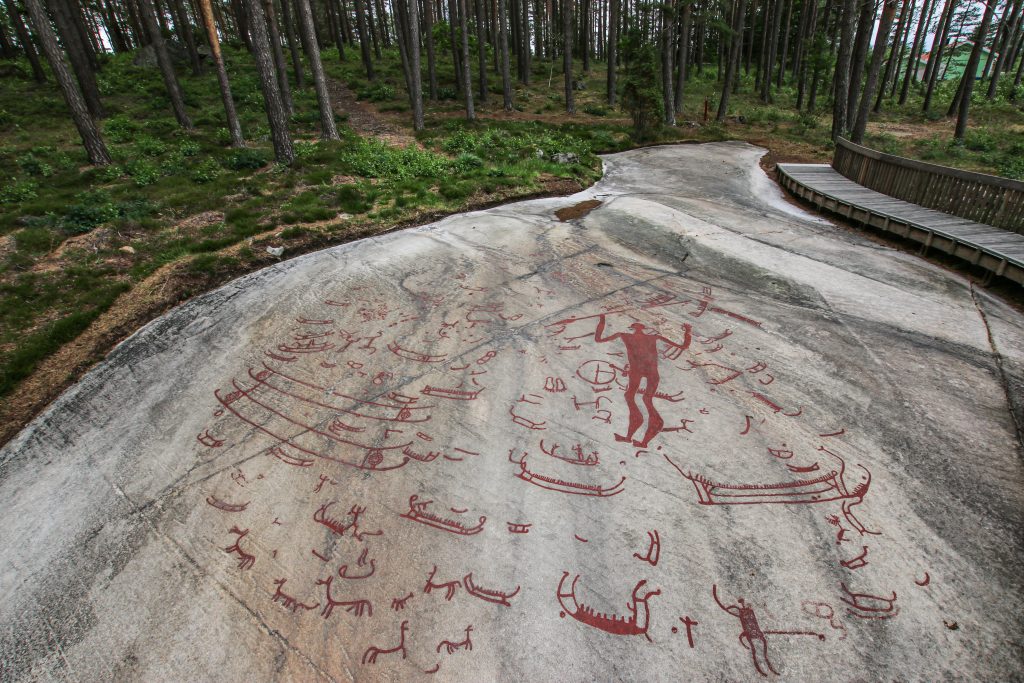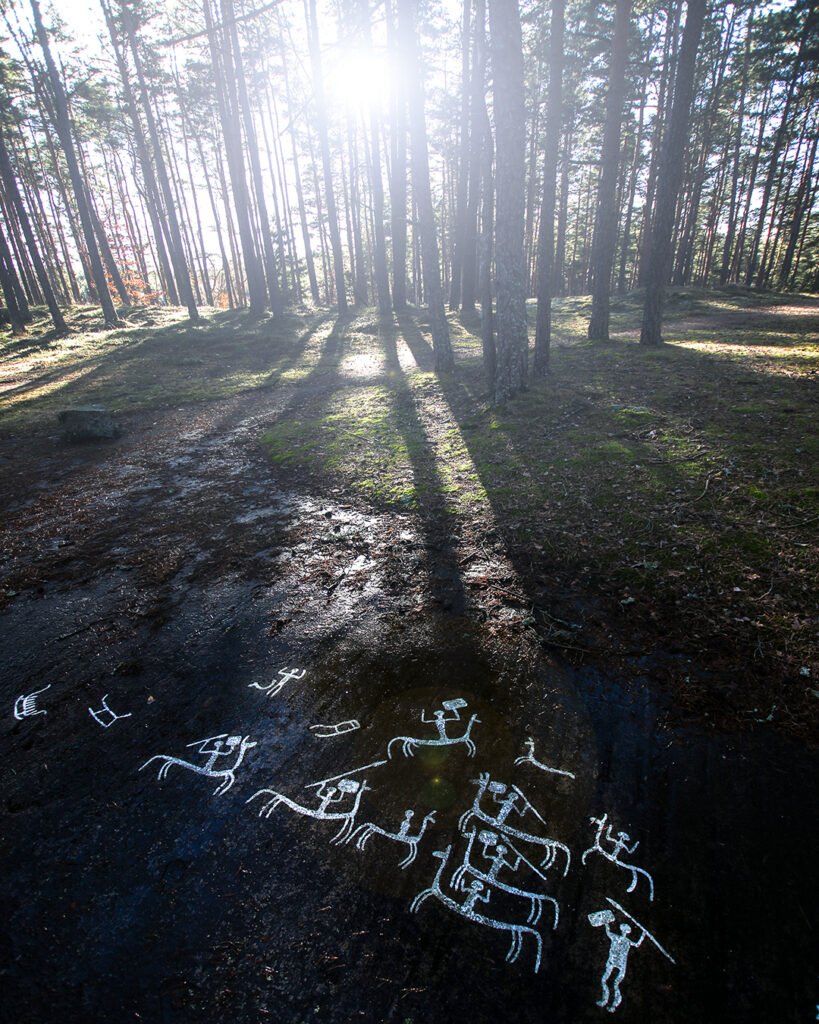The rock carving at Litsleby
Litsleby is most famous for the carving known as the Spear God. He measures 230 cm from head to toe and is the largest human figure in Scandinavian rock carvings. The image is one of the last ones carved on the rock and was made on top of earlier carvings. Just like the other large panels in the World Heritage Site, the Litsleby carvings were carved over an extended period of time. What sets Litsleby apart is that a significant portion of the images were made during the early Iron Age. Rock carvings of ships from the Iron Age are recognizable by their identical appearance at both ends. The large number of horses on the panel can also be assumed to have been carved during the Iron Age.

Follow the path at the end of the ramp to reach a considerably smaller but equally interesting carving. On an almost flat panel, there is a battle depicted between horse-mounted warriors. These riders are armed with spears and rectangular shields, indicating that this panel was also made during the later period of rock carving in Bohuslän. The path leading to this panel is 100 meters long.
Most of the carvings are filled with colour, and the area is equipped with informational signs.
How to get to Litsleby
The rock carvings are located 2 kilometres southwest of the Vitlycke Museum. Follow road 914 south from the museum, and after 1 kilometre, there are signs directing you west towards Litsleby. The parking area is located directly adjacent to the rock carvings, and the large Litsleby panel is accessible with wheelchair.
The rock carvings at Litsleby at Google Maps.
